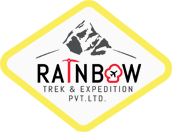Everything you need to know about trekking to Everest Base Camp. Get the most valuable tips on how to plan your next adventure to the base of the top of the world.
Exploring Nepal's Diverse Wildlife at Chitwan National Park
Immerse yourself in exploring Nepal’s diverse wildlife and extensive biodiversity with Jungle safari, canoe along the Rapti River
Listed as a UNESCO World Heritage site, Chitwan National Park is home to a wide variety of flora and fauna. It is one of the biggest wildlife paradises in the country, covering an area of about 950 square kilometers in the southern part of Nepal. The park encompasses a variety of ecosystems, including grasslands, tropical and subtropical forests, riverine habitats, and wetlands.
Every year, it attracts hundreds of thousands of visitors and is considered one of the favorite tourist destinations. Chitwan National Park can be visited throughout the year, depending on personal preferences. The monsoon season offers lush greenery, while the dry season allows for better visibility and wildlife sightings. The fall season is often favored by visitors due to its pleasant weather conditions.
Wilderness inside the park:
The park is famous for its wilderness, where wildlife lives and roams freely in their natural habitat. It is believed to have more than 700 species of wildlife, including the majestic Bengal tiger, one-horned rhinoceros, wild elephant, rare species of crocodile commonly called ghariyal, and over 500 species of birds. Thanks to successful conservation efforts, the populations of the endangered one-horned rhinoceros, Royal Bengal tigers, and ghariyals have increased in recent years.
What floral and fauna can be found inside the park?
In terms of flora, the park is known for its tall hardwood trees, such as Sal, which is one of the dominant species in the forest. Other mixed broadleaf species like Asna, Kadam, Khair, and Sissau can also be found in the park. River forests exist along the banks of rivers and small streams that cross the park. The majority of the park is covered with grasslands, providing grazing grounds for many herbivorous animals.
Apart from the prominent species mentioned, Chitwan National Park is home to various other mammals, reptiles, amphibians, and fish species. Its diverse ecosystems support rich biodiversity, making it an important conservation area and a popular destination for wildlife enthusiasts.
What is the best way to explore the Chitwan National Park?
When it comes to exploring the park, a jeep safari is the best way to do so. The jeep is a small open-roofed vehicle that can accommodate a small group of visitors. The Jeep Jungle Safari in Chitwan National Park offers a thrilling adventure, allowing visitors to witness the park's incredible biodiversity and natural wonders. It provides a unique opportunity to spot wildlife from a distance and enjoy the scenic landscapes, including lush forests, open grasslands, winding streams and rivers, and wetlands.
During the safari, highly experienced guides ensure the safety of both visitors and wildlife. Strict safety regulations must be followed, including maintaining a respectful distance from the wildlife. The safari vehicles strictly adhere to designated routes and speed limits to minimize disturbance to animals and their habitats.
Canoeing along the Rapti River in small wooden guided boats is another excellent way to explore the scenic landscape of the park. Guided nature walks are also conducted along the riverbanks with experienced naturalists. These walks are ideal for bird lovers, as numerous resident and migratory birds can be spotted, including endangered species like the Bengal florican and various species of storks, herons, and eagles.
In addition to wildlife encounters and scenic landscape sightseeing, the Jeep Safari may include visits to nearby Tharu villages. These villages allow visitors to learn about the Tharu community's culture, traditions, and lifestyle. The Tharu people are an indigenous ethnic group living in the Terai region of Nepal, which includes areas around Chitwan National Park. They have a distinct culture and a long history of coexistence with the natural environment.
Wetlands inside the Park:
Chitwan National Park is also home to several wetlands that play a vital role in the park's ecosystem. These wetlands provide crucial habitats for a wide range of plant and animal species, contributing to the overall biodiversity and ecological balance of the park. Notable wetlands include Beeshazar Tal (Twenty Thousand Lakes), formed by about twenty oxbow lakes created by the Rapti River, and Ghagga and Kasara Lakes. Rani Tal (Queen's Pond) is a small but significant wetland near the park headquarters, serving as an artificial pond to provide water for animals during dry seasons.
What are the options for accommodation and foods near the Chitwan National Park?
There is a wide selection of resorts and hotels near the park, offering comfortable and luxurious accommodations. These establishments also feature in-house restaurants serving a mix of local and international dishes. Emphasizing fresh, organic, and locally sourced ingredients, they provide a delightful culinary experience.
The area surrounding Chitwan National Park offers a wide variety of foods, ranging from typical Nepali cuisine to traditional Tharu cuisine. Indian foods, continental and international cuisines, fresh river fish, and a large variety of street foods are also available nearby.

Share This Post